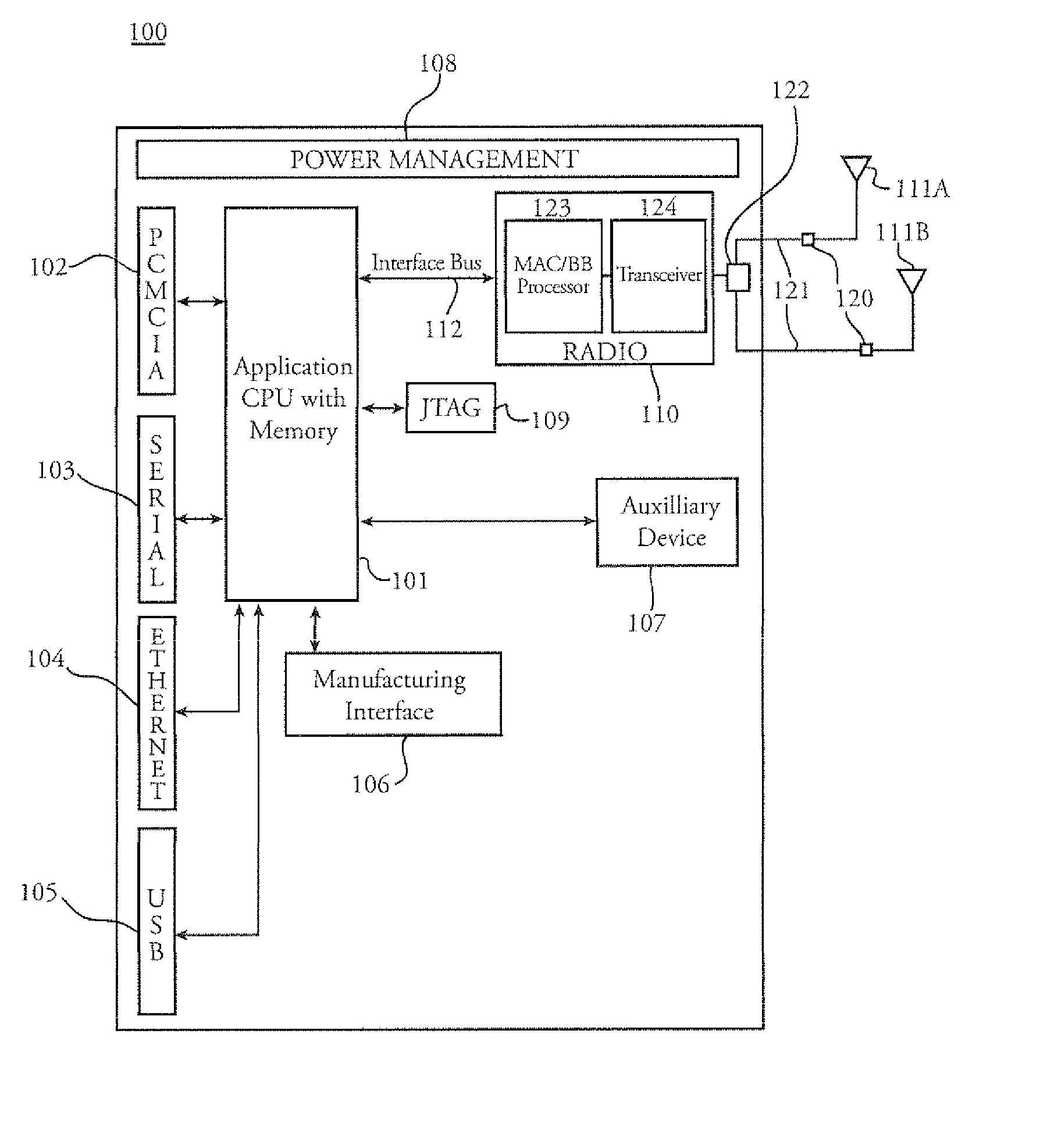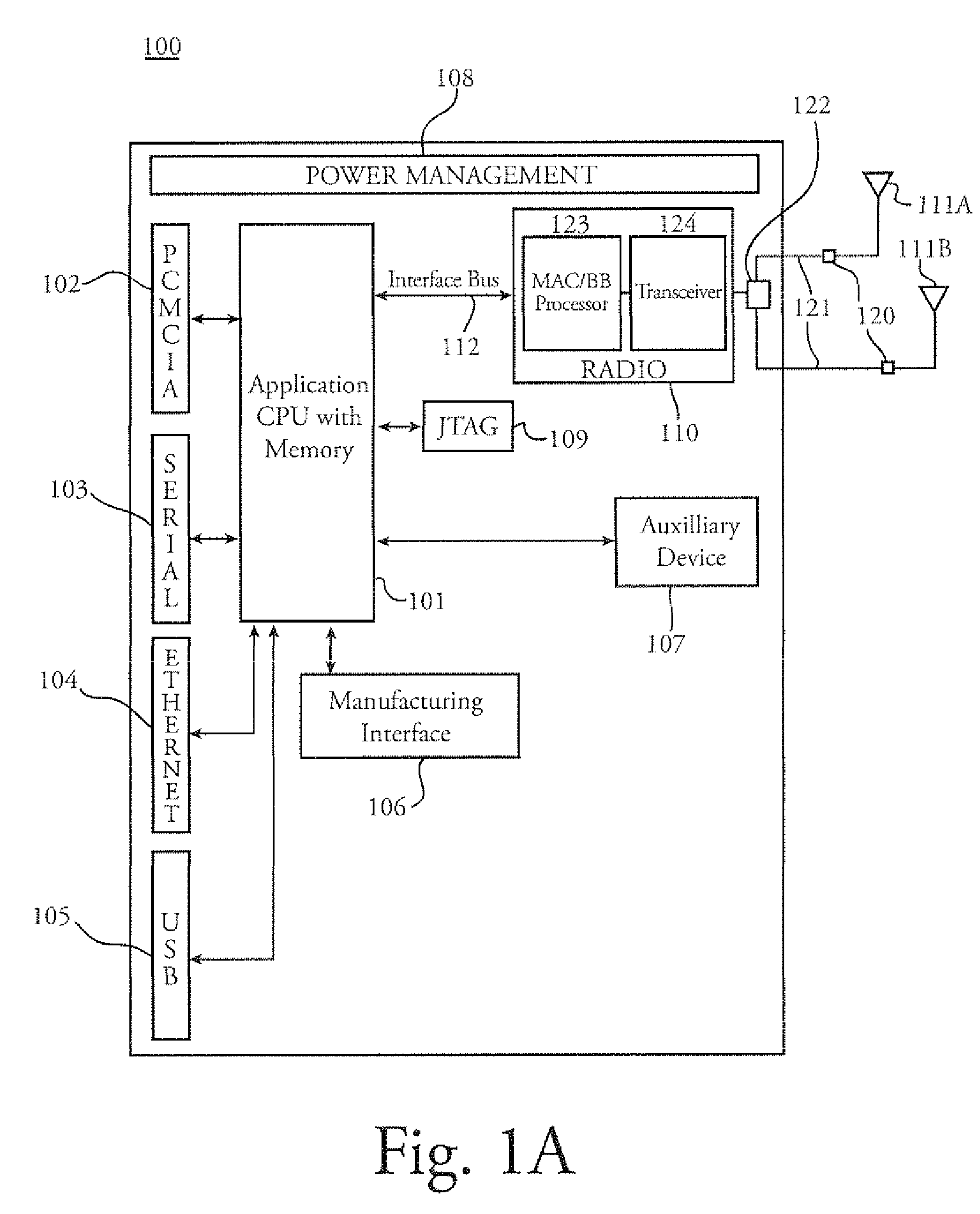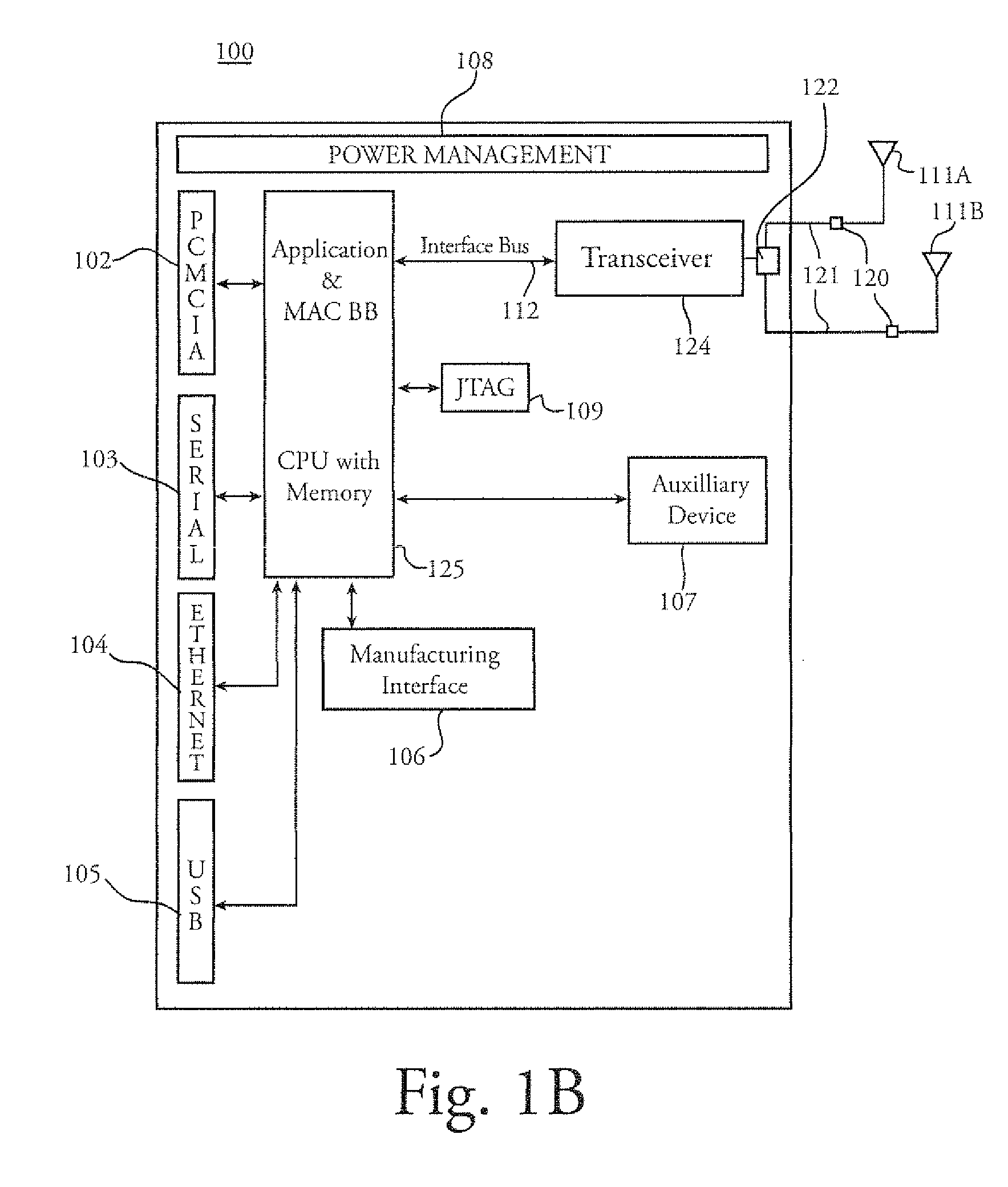Medical device wireless adapter
a wireless adapter and medical device technology, applied in the field of medical device wireless adapters, can solve the problems of putting an enormous computational burden on a real-time processor that is generally not well suited to the task, and is generally not available on embedded platforms,
- Summary
- Abstract
- Description
- Claims
- Application Information
AI Technical Summary
Benefits of technology
Problems solved by technology
Method used
Image
Examples
Embodiment Construction
[0038] Referring to FIG. 1A, there is shown a block diagram of a medical device wireless adapter (“MDWA”) of the present invention. In one embodiment, the MDWA 100 can connect to and exchange data over a PCMCIA bus 102. This is a particularly convenient way to add wireless connectivity to legacy medical devices having available PCMCIA slots to accept a MDWA 100 in this embodiment, in the form of a PCMCIA card. CPU block 101 (including internal and / or external memory) performs all application computational functions of MDWA 100. MDWA 100 can receive and send data to devices over one or more serial ports 103, Ethernet ports 104, USB ports 105, over the PCMCIA bus, or over other interface known to those skilled in the art, including PCI, CardBus, SPI, IEEE 1394 and I2C. Manufacturing interface 106 can be used to program the Application CPU and associated memory 101 with the MDWA firmware at time of manufacture or in the field via an interface cable (not shown). JTAG block 109 represent...
PUM
 Login to View More
Login to View More Abstract
Description
Claims
Application Information
 Login to View More
Login to View More - R&D
- Intellectual Property
- Life Sciences
- Materials
- Tech Scout
- Unparalleled Data Quality
- Higher Quality Content
- 60% Fewer Hallucinations
Browse by: Latest US Patents, China's latest patents, Technical Efficacy Thesaurus, Application Domain, Technology Topic, Popular Technical Reports.
© 2025 PatSnap. All rights reserved.Legal|Privacy policy|Modern Slavery Act Transparency Statement|Sitemap|About US| Contact US: help@patsnap.com



